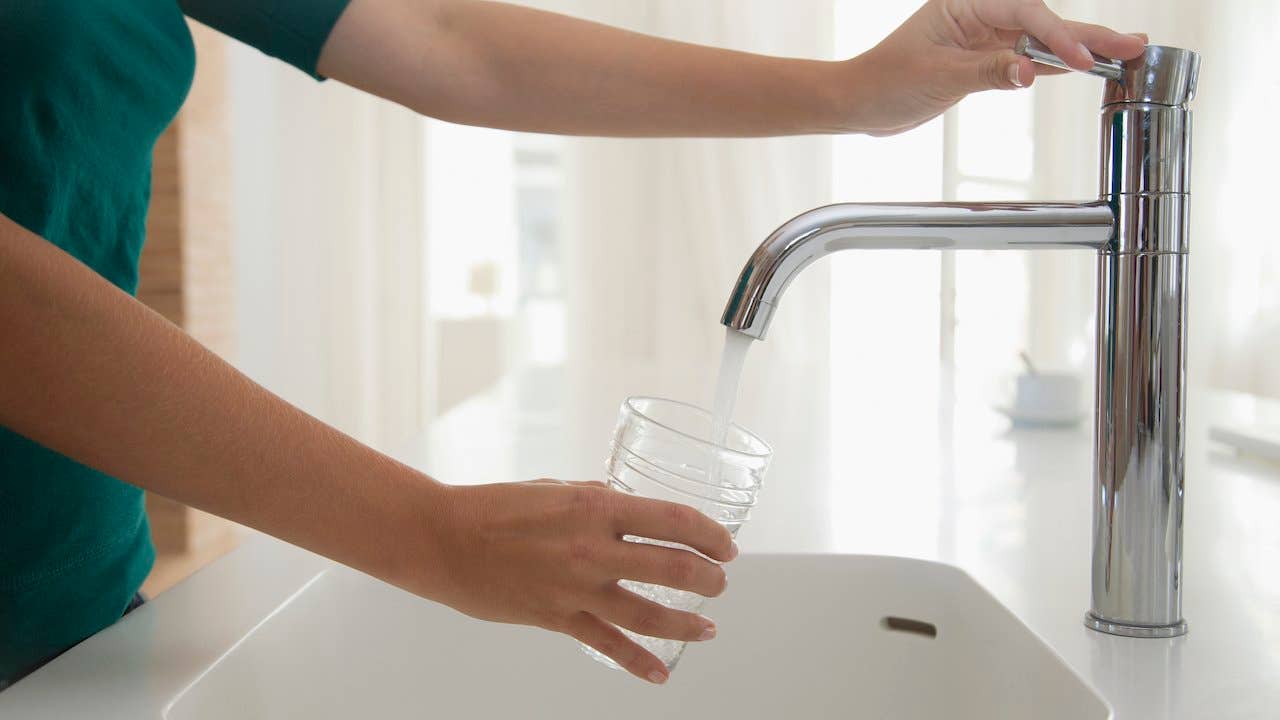Buying a house with well water: Everything you need to know

Amid a red-hot housing market and a shortage of inventory to choose from, more than a few prospective homebuyers are widening their searches to include options they might have previously ruled out. Casting a wider net geographically, for instance, has become par for the course. In some cases, this may include considering a home in a more rural area that relies on a well for its water needs.
Buying a house with a well can seem daunting and complex compared with a home serviced by a municipal water system. You will likely have to pay for a specialized inspection to ensure the well works properly before finalizing the sale, and there are ongoing maintenance needs and costs to consider. Here’s everything you need to know about buying a house with well water.
What is well water, and how does it work?
More than 15 million homes in the United States rely upon private household wells, according to the Centers for Disease Control and Prevention (CDC). Homes that utilize this type of system, rather than being hooked up to the public municipal water system, get their water from a hole drilled deep into the ground. This provides access to the groundwater, also called an aquifer or a groundwater aquifer.
“Well water is essentially groundwater that’s untreated,” says Bill Gassett, a RE/MAX Realtor and owner of Massachusetts-based Maximum Real Estate Exposure. “A professional well-driving company will drill until they hit an aquifer — a layer of permeable rock that contains water. A pump system will then be installed to bring the water up from the ground and into a property.”
Typically, household wells include a pump and a system of pipes to draw the water from the ground and convey it to an exit source, such as your kitchen sink or bathtub.
Quality and inspection requirements for well water
While public drinking water is protected by Environmental Protection Agency regulations for quality, there are no such protections in place for most privately owned wells. Instead, the owners are responsible for making sure the water from their well is safe, says the CDC.
Well water is untreated and has the potential to become contaminated, particularly if the well was not installed correctly. Contamination can be caused by chemicals seeping from a nearby landfill or failed septic tank. Underground fuel tanks, fertilizers and pesticides are also sources of potential contamination.
For this reason, before closing on a new home with its own well water, it is important to have the system inspected by a specifically qualified professional who can test for such issues, says Rupa Mehta, a home expert with Angi. These tests involve checking both water quality and the amount of water the home’s well produces. “They’ll check the condition of the well, the water pressure and the pumps, to make sure everything is safe and working properly,” says Mehta.
“For the quality, [the inspector] will take a sample of the water, which will be sent to a certified lab for results,” says Gassett. “For the quantity, the water will generally be run for three to four hours to check the gallons per minute and the recovery rate.”
It’s also possible for a well to be impacted by materials or ground minerals that, while not necessarily a danger to your health, are still undesirable. “For example, in my locations it’s not unusual to have a high iron count,” says Gassett. “Unfortunately, a high iron count can stain your clothes and plumbing fixtures over time.”
How to find a well inspector
If you are working with a local real estate agent, particularly in a rural area where wells are common, he or she will likely be able to recommend qualified inspection companies. In addition, your local or state health or environmental departments can be a useful resource. These agencies may be available to provide some types of water testing, as well as a list of area companies that provide well testing and inspections.
What to know about well maintenance
When purchasing a home with a well, keep in mind that there will be ongoing maintenance requirements — and costs. One of the most important maintenance tasks is water testing, says Mehta, which can cost about $250 annually.
“You should aim to get your water professionally tested at least once a year,” she says. “Frequent tests will make sure your water is safe and free from sediment buildup and contaminants.”
The CDC provides specific guidelines for well testing. It recommends having your well tested every spring, at a minimum, to ensure it is functioning properly and its water is free of contaminants, such as bacteria, nitrates or lead. The water’s pH levels should also be checked.
In addition to regular annual maintenance, there are other occasions when you should also test, per the CDC. They include:
- If problems have been identified with other well water in your area
- If there was flooding or other land disturbances near your well
- If part of your well system underwent repairs or was replaced
- If you notice a change in water quality, such as a difference in taste, scent or color
You’ll also need to replace your well pump about once every 10 years. This can cost between $850 and $2,250, Mehta says.
Pros and cons of well water
Like anything, there are both benefits and drawbacks associated with using well water. Here are some of the issues to keep in mind when considering a home with a well.
Pros
- Decreased monthly bills: Because well water comes from your own private source, you don’t receive a monthly water bill.
- Improved taste: Many people think well water tastes better and fresher than treated water provided by a municipal system.
- Self-reliance: Homes with a well are not reliant on the municipal water system. This can be particularly valuable in the event of a natural disaster or other catastrophe. Also, in times of drought, well users are not impacted by government usage limitations.
- Rural life: For those who enjoy living far from the bustle of the city, or even the suburbs, wells can be a necessity. Some homes are simply too far from town to be hooked up to the municipal system — a well is the only way to provide running water.
Cons
- Maintenance requirements: A well system involves a great deal of maintenance that you don’t have to think about with water provided by a municipal system.
- Potential for contamination: If not vigilantly maintained, well water can become contaminated.
- Ongoing expenses: You might not get a monthly water bill from the government, but annual water tests, repairs and maintenance can add up.
- Dependent on power: A well’s pump runs on electricity. So, it’s a good idea to have a back-up hand pump in the event of a power outage. “With no electricity the pump will not work, so you will only have the water that is in the well chamber,” says Gassett.
Bottom line
Household wells eliminate monthly water bills and, in some rural areas, can be the only way of providing running water to an isolated property. But before taking on the responsibility of a home with well water, be sure to have the entire system professionally inspected. It’s also important to understand all of the testing requirements and expenses involved in safely maintaining a well. After all, what could be more important than safe, clean drinking water for you and your family?
You may also like

What are the most common home maintenance costs?

How to buy land using your home equity




